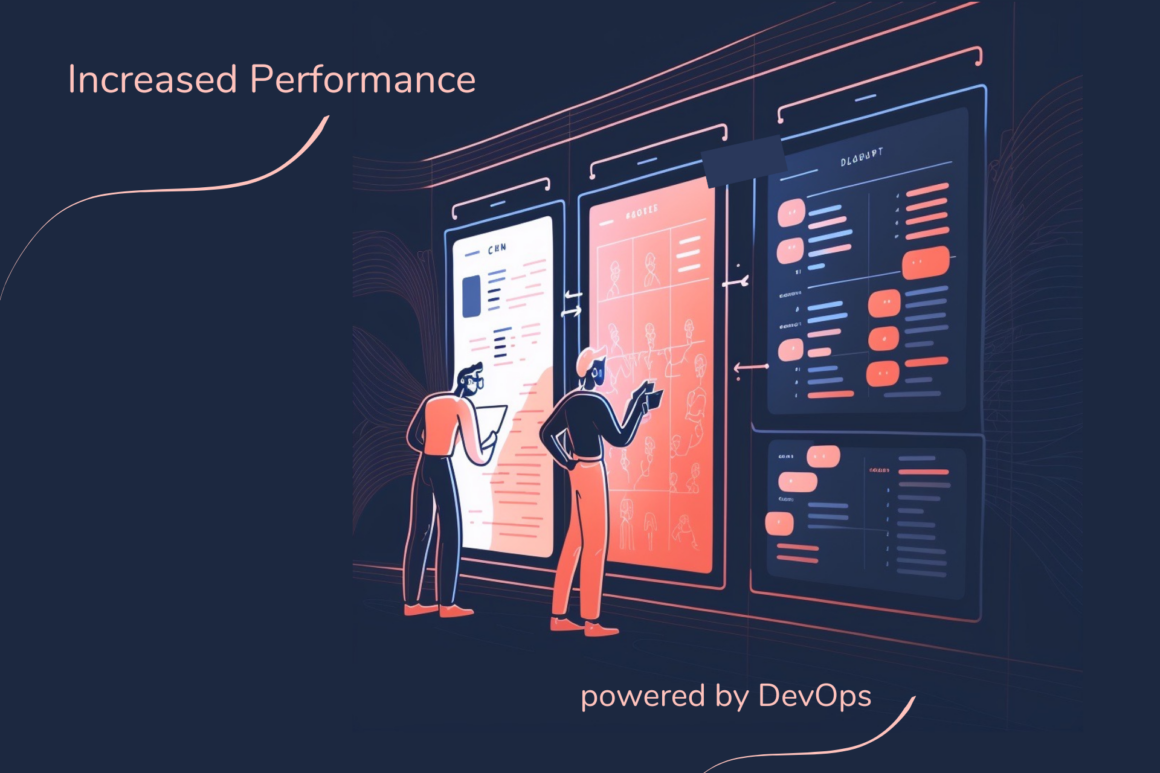There used to be a time when those who wrote code were organizationally and functionally apart from those who deployed and supported that code. They had separate (and often competing) objectives, separate key performance indicators and separate managing systems. Thankfully, the broken lines of communication between development and operational management have been united into what today we call DevOps services.
In this article, we are going in-depth in an attempt to reveal how the DevOps services benefit not only those who apply them but also the organizations who chose to leverage this methodology to increase their business value.
Table of Contents
DevOps is used by a variety of organizations, including large enterprises, small and medium-sized businesses, and startups. It is used by organizations across a variety of industries, including software, healthcare, finance, e-commerce, and manufacturing.
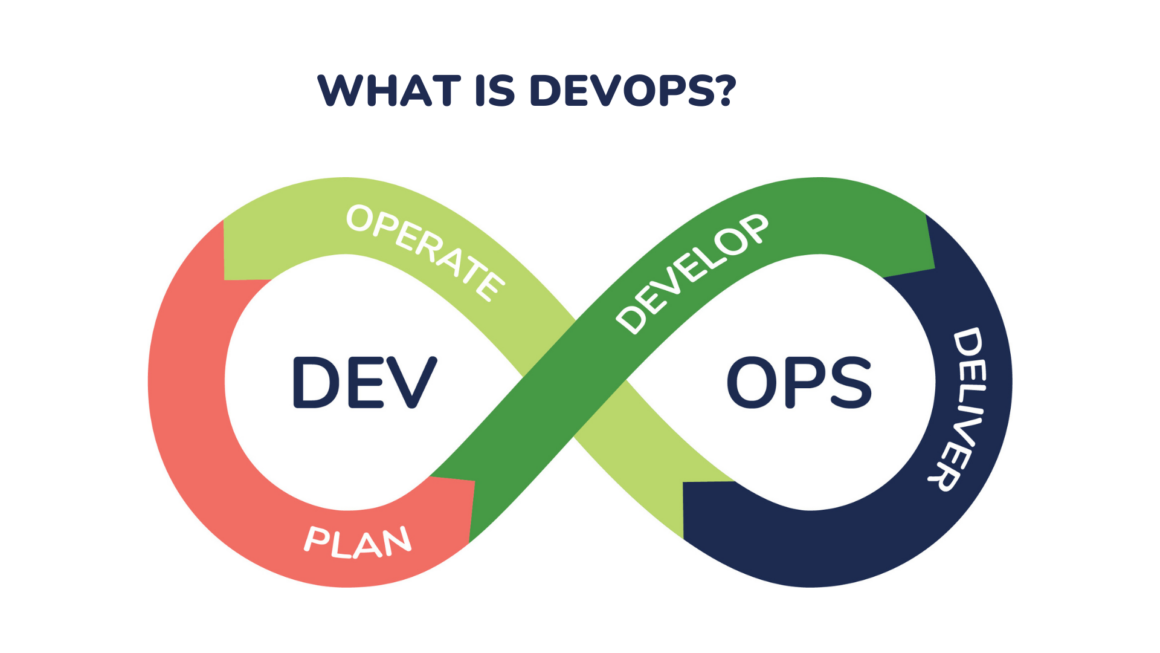
What is DevOps?
DevOps is a software development methodology based on a series of practices that emphasize collaboration and communication between software developers (Dev), IT operations (Ops), and other stakeholders to create a streamlined process for developing, deploying, and managing applications. It is designed to maximize the speed and efficiency of the software development lifecycle while ensuring the highest quality of software products.
DevOps integrates a wide spectrum of techniques, processes, and tools from development and IT operations, covering the entire lifecycle: from planning and constructing to observing and improving.
The DevOps solution arose from the need of implementing a less rigid methodology which was represented by the traditional, low-variability practice called Waterfall. This approach requires that the entire project be completed before any feedback from users can be incorporated into the development process.
The journey was then followed by the Agile iterative methodology which is based on the idea that requirements and designs should be flexible and evolve with user feedback.
This finally culminated in the DevOps approach which focuses on improving the speed, flexibility, and reliability of the software development process.
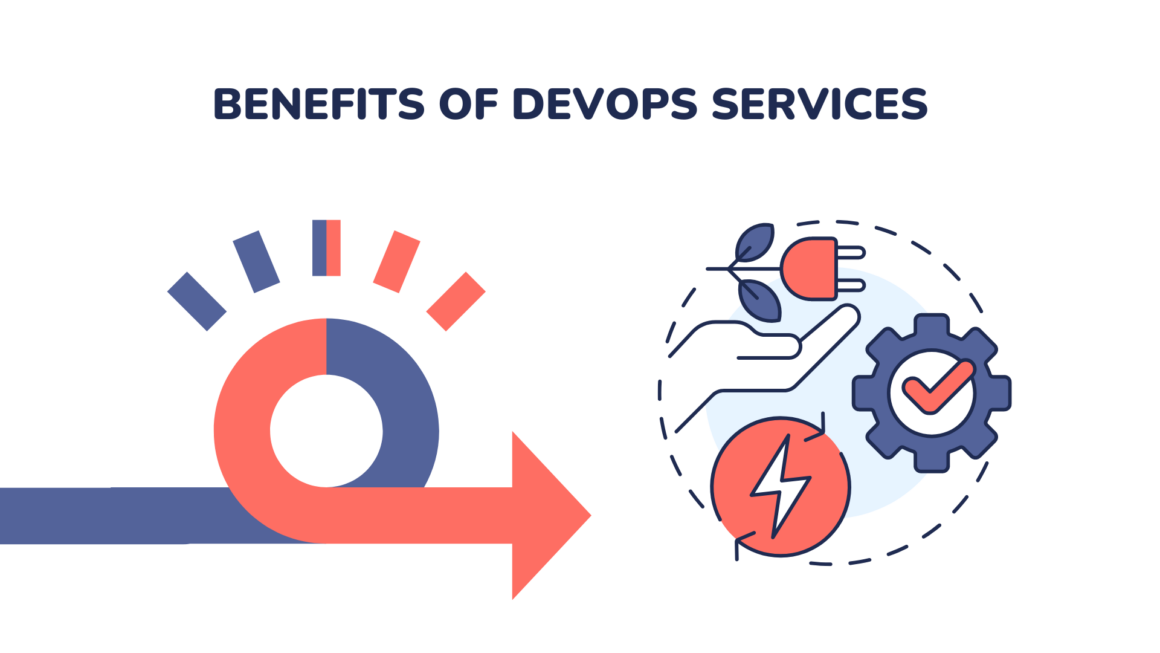
Benefits of DevOps Services
DevOps services help organizations to rapidly deliver software and services to the customer with the highest quality, speed and cost efficiency possible. Giant companies like Amazon, Google, Microsoft, Facebook, Netflix, Uber, eBay, Twitter, Linkedin, and Spotify all use DevOps services to improve their products, services, and processes in order to remain competitive.
Any type of organisation can leverage this methodology. So here are some key benefits that DevOps Services offer:
Improved Quality and Speed of Product Delivery
By automating the deployment process, DevOps ensures that code is tested quickly and errors are caught early. This helps to ensure that the software and services deployed are of the highest quality. In addition, DevOps helps organizations stay up-to-date with the latest technologies and trends, allowing them to deliver the latest features to customers faster.
Cost Savings
DevOps services include automated infrastructure, tasks and processes, enabling organizations to reduce their operational costs. By streamlining the development, testing, and deployment processes, the DevOps model can help companies save time and money. Automation of processes like code deployment, infrastructure provisioning, and monitoring can reduce manual labour costs, while rapid feedback and iterations lead to faster time-to-market and product improvements.
Enhanced Innovation
DevOps enables teams to automatically test and deploy code changes, allowing for rapid feedback loops and experimentation. This allows teams to drive for continuous process improvement by enhancing the quality of their applications in an efficient and cost-effective manner, creating space for innovative solutions.
Improved Collaboration
One of the most obvious benefits of DevOps is the increased collaboration and communication between different teams and departments. A better understanding of requirements leads to fewer errors and faster resolution of issues.
Greater Automation
DevOps practices reflect the idea of continuous improvement and automation as opposed to manual effort. This reduces the amount of time and resources required to deploy and maintain applications, resulting in faster delivery times and improved quality.
Better scalability and availability
Continuous delivery enables teams to rapidly deploy applications and other changes to production. This ensures that changes can be implemented quickly and efficiently, making it easier to scale and deploy new features. Utilizing infrastructure as code makes it easier to replicate environments and quickly scale up or down when needed. Lastly, automating IT processes ensures consistency across all environments, making scaling and availability easier to manage.
Improved Security
By automating processes and tasks, DevOps services help organizations ensure that their applications and services are secure. This helps to protect customer and organizational data. For example, DevOps teams can use secure cloud storage solutions that provide robust encryption and authentication. They should also establish a security monitoring process that continuously monitors system activities and detects any potential security threats.
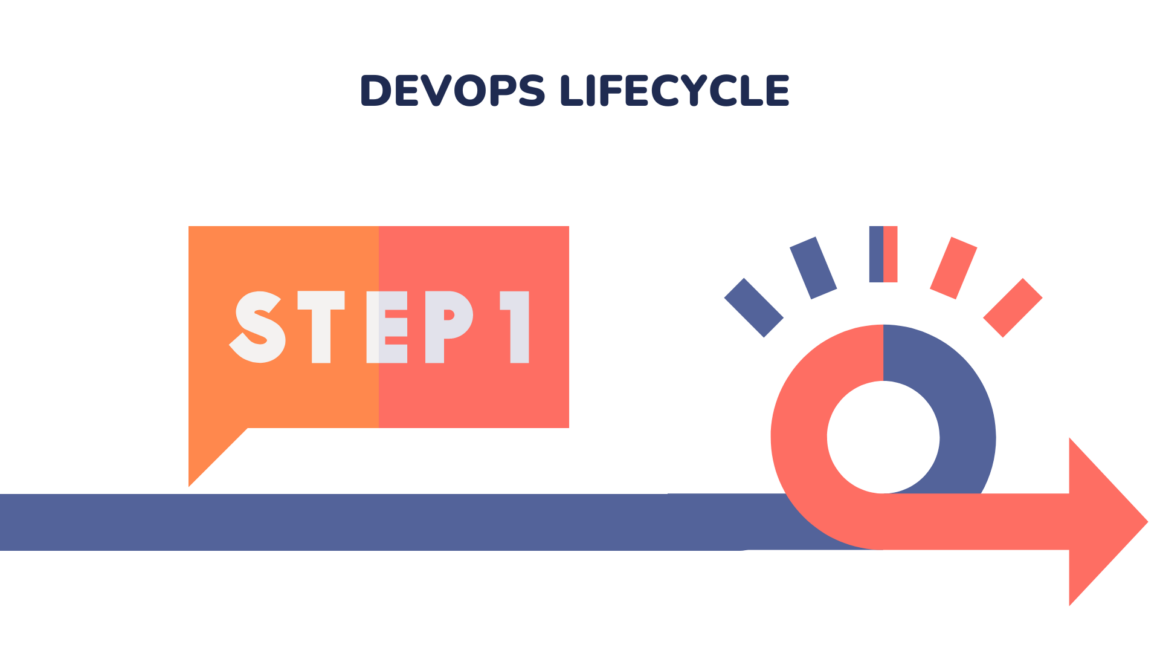
DevOps lifecycle
The DevOps lifecycle is a continuous process of development, testing, deployment, and maintenance that helps organizations keep up with the ever-evolving technology landscape.
Every step of the DevOps journey is dependent on the others and no particular role is exclusive to any one phase. In a DevOps environment, each role is typically involved in each phase in some way.
The DevOps lifecycle consists of these 6 steps:
Plan
In the initial phase, the DevOps consultants come up with ideas, lay out the details of what will be built, and explain how the applications and systems work. They look at both the big picture and smaller individual tasks, from individual products to a range of multiple products. To keep organized and be more agile, DevOps teams make use of backlogs, bug tracking, Scrum for agile software development, Kanban boards, and progress dashboards.
This is where the software company works with the business owner to plan out the desired end product, timeline, and cost.
Develop
The second phase of DevOps entails writing, testing, reviewing, and integrating code by team members, compiling the code into build artifacts for deployment into different environments. By leveraging efficient tools, automating tedious manual processes, and continuous testing and integration, the team increases stability, and productivity and iteratively improves product quality.
Here, the software company designs the system architecture and develops the necessary software for the client.
Deliver
The deliver phase starts when the application is released from development and is ready for deployment. This phase involves the creation of the necessary artifacts and packages, as well as automating the deployment process. This also means establishing a release management process with manual approval stages and automated gates, allowing teams to deploy applications consistently and reliably. By automating the process, the DevOps team ensures scalability, repeatability, and control. The phase also includes configuring the foundational infrastructure that makes up the environments.
For the client, this means that the software company will deploy the system, configure and administer it, and perform tests to ensure the system is working properly.
Operate
This stage focuses on maintaining, monitoring, and troubleshooting applications in production environments. The teams strive for system reliability, high availability, and zero downtime while ensuring security and governance. They work in a preventative manner, identifying and addressing issues before they have an impact on customer experience.
This means that the software company will monitor the system, apply updates and patches, and provide technical support when needed. Likewise, the software company will decommission the system when it is no longer needed.
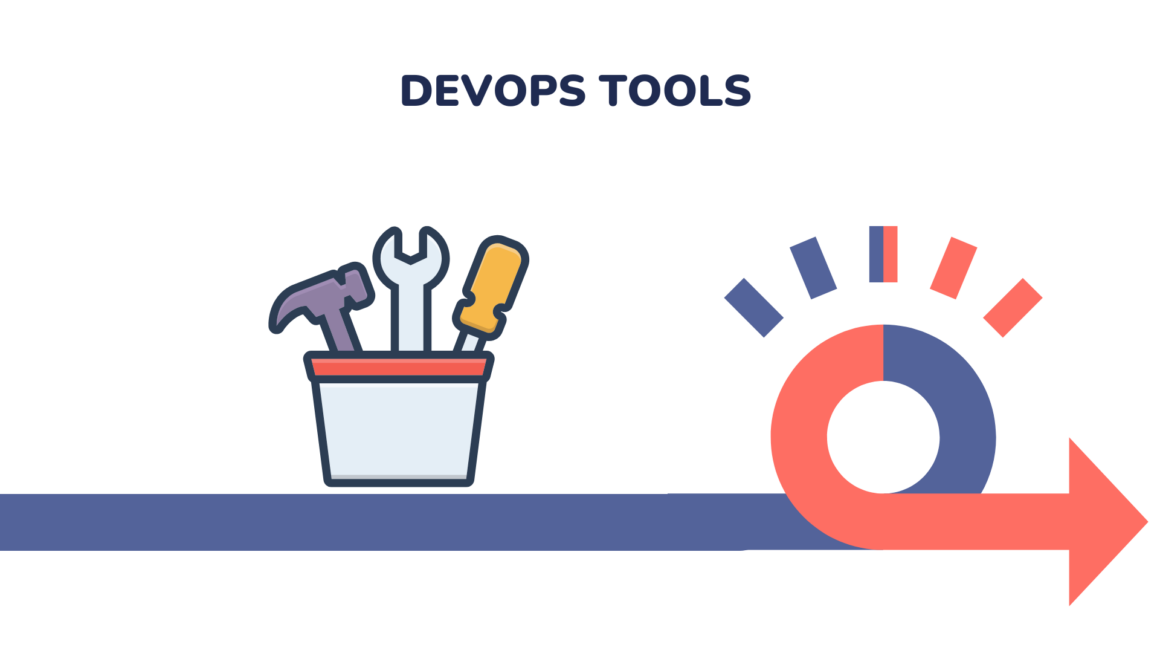
DevOps Tools
The DevOps tools we use at Fabrit are:
- Azure Boards
- Azure Repos
- Azure Pipelines
- Azure Artifacts
- Azure Test Plans
In a constantly evolving environment, keeping in peace with the trends seems to be a real challenge that many organizations face when it comes up to choosing the right technology stack. For the last decade, in a matter of software development, we’ve assisted a paradigm shift from the classical Waterfall model to Agile.
Bringing forward individuals and interactions over processes and tools, working software over comprehensive documentation, customer collaboration over contract negotiation, and responding to change over following a plan, could not be done without the appropriate technology stack.
Choosing the right technology stack to ensure quality engineering came to be a real challenge, not only when designing a product but also when architecting the whole technology environment.
The tools that came up to be most effective in implementing DevOps in an organization might depend in a significant measure on the organization’s technology stack. In a Microsoft-driven technology stack, the most appropriate and comfortable choice for many organizations came up to be Microsoft Azure with its Azure DevOps solution.
Why did we choose the Azure tools? Because the seamless integrations between the programming languages, integrated development environment, and infrastructure, have made the Microsoft ecosystem one of the most attractive choices for many organizations.
This way, delivering software comes with ease when you have a fully integrated solution that completes every aspect of the software development lifecycle.
Using Azure DevOps, a cloud-agnostic platform that integrates not only Microsoft’s products but also provides flexible, cross-platform integrations for a wide range of toolkits and stacks.
So what exactly do these tools offer?
- Technologies such as Azure Boards help us with panning, work tracking, and visualization reports.
- Azure Pipelines gives us a fully cloud-agnostic CI/CD platform.
- Azure Repos provides us with cloud-hosted private repositories.
- Azure Artifacts helps us integrate package management
- And lastly, Azure Test Plans provide us with an integrated and planned testing solution.

Applicability of DevOps
Assessing whether an organization is DevOps compatible depends on its practices and in-place software delivery methodology.
DevOps practices aim to increase an organization’s value and team’s performance, providing a structural change in how software it’s delivered.
One of the major outcomes of implementing DevOps consists of a set of connected practices, such as continuous integration and continuous deployment pipelines, that minimizes human intervention in building quality-driven software and fastly delivering applications to customers.
The applicability of DevOps is best seen in new projects started from scratch.
The team and the client get used to automation concepts from the early beginning and the development flow is faster and less prone to human errors.
For example, on one of our client’s projects – a music theory search engine, we could see how the DevOps tools and processes reduced the time from production to market. Developers were able to test their code faster in a production-like environment and new team members got up to speed in minutes as the same processes and way of working were used in the context of their previous projects. It also reduced almost to 0 the number of configuration problems for production deployments as there were no more “it works on my machine” problems.
Together with a cloud-first approach that simplifies the infrastructure provisioning, we are creating a recipe for success for any new project. Whether the client opts for private cloud, hybrid cloud or public cloud, we’re taking advantage of infrastructure as code (IoC) tools to reduce risk and cost.
Cloud computing offers a number of benefits for businesses including cost savings, scalability, and reliability. It can also give clients the option of recreating the entire project in other locations in just hours.
Another major benefit of cloud solutions is cost savings. Instead of having to invest in expensive hardware and software, we can access the resources we need on a pay-as-you-go basis. This eliminates the need for large upfront investments and allows for more flexible and efficient use of resources. This helps test new ideas without any huge cost commitments.
Cloud computing also enables scalability. With traditional on-premises solutions, adding or removing resources can be a time-consuming and costly process. Cloud computing allows businesses to easily scale up or down as needed, providing the necessary resources to meet changing demands. Cloud computing services are built on a large network of servers, which provides a high level of reliability. Performing database migration. companies have access to a higher level of reliability that cannot be reached by owning their own hardware.
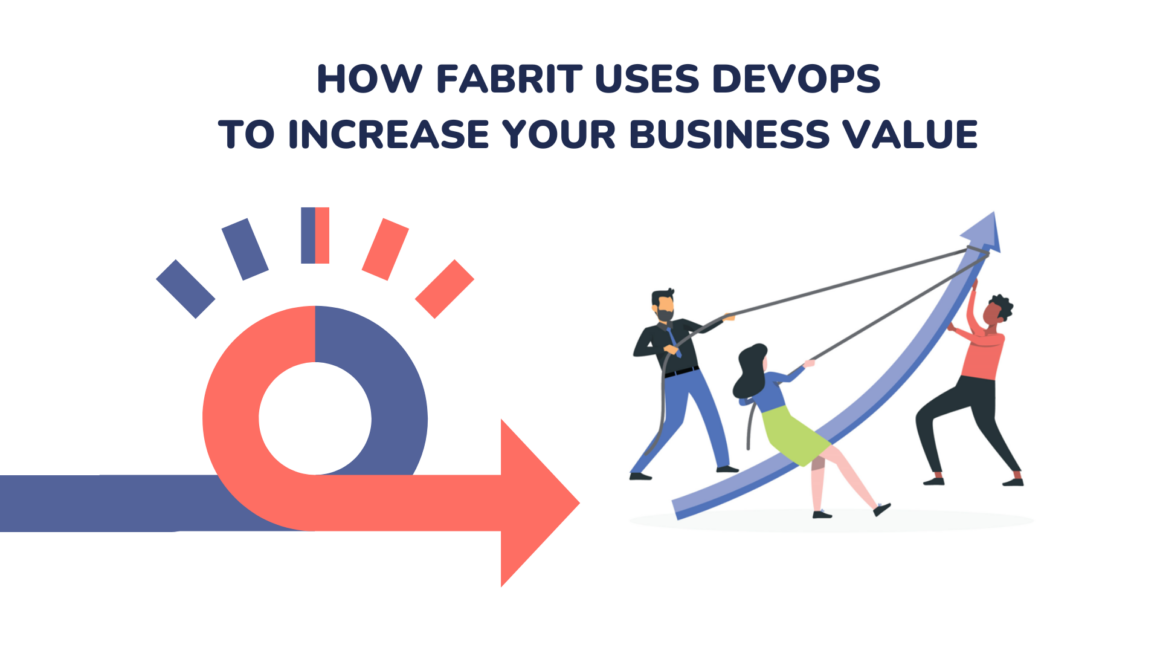
How Fabrit uses DevOps to increase your Business Value
Constant communication within teams and collaborations with the operational team has proved to be a significant advantage that organizations have after implementing DevOps.
Working Agile has come up to be a really powerful solution that enables organizations to create a fully functional product from the incipient phases of the projects.
So how does Fabrit use DevOps to increase clients’ business value?
Enhancing speed to the market by adding time frames
By working Agile, we’re currently establishing a time frame in which we agree on the amount of work that should be completed. This is recognized as a sprint.
Every Agile project will be split into a particular number of sprints, every sprint taking us closer to the final product.
A sprint consists of four steps: planning, execution, review, and retrospecting.
As a part of planning and executing a sprint, we are using various roles that are directly involved in this process.
Increasing project clarity by assigning strategic roles
One of the roles is the product owner, whose daily responsibilities are managing the product and defining the user’s stories, based on their knowledge of the product itself and the end-users. This means that the product owner is able to make decisions that have a positive impact on the product, which in turn benefits the client and their business.
Another significant role is the scrum master, who is also the project manager on that particular team, whose responsibilities are to keep track of the individual and overall progress of the teams, as well as help the teams to improve their efficiency. The added business value is having a more productive and successful team in completing projects.
Improving product delivery by splitting the work volume
Here at Fabrit, we’re fully taking advantage of the benefits of sprints, allowing us to manage projects of a high degree of complexity, as well as facing changes in demands and requirements. By splitting the work volume into smaller chunks we’re constantly improving the product by easily identifying the bugs and we’re able to easily roll out an update or change if it affects the system, as well as easily keeping track of customers’ last-minute demands.
The added business value is translated into the on-time delivery and high quality of the product. Additionally, it allows companies to respond to customer demands quickly, which can help to improve customer satisfaction and loyalty.
Strengthening team cooperation by complementing the developing team
As our team developed and provided highly-quality software for a wide range of clients, from fintech to cybersecurity, we’ve come to the conclusion that sprints are not only about detecting technical issues that arise or adapting to last-minute changes and demands, nor even speed, but rather, as John Zeratsky states in its book Sprint and Make Time, “It’s also about gaining momentum, focus and confidence”.
To this we can also add that DevOps is complementing the client’s development team through flawless team cooperation and seamless implementation of automation and agile practices, giving them better visibility and control over their projects by tracking the progress of their work in real-time.
Here at Fabrit, we’re taking advantage of the whole Microsoft ecosystem of tools, from Azure DevOps to Azure Cloud.
Tools such as boards, pipelines, and repositories, have been smoothly integrated with an Azure infrastructure, to fastly deliver custom software for our clients.
By using a centralized tool such as Azure DevOps, we’ve managed to significantly improve our development cycle by reducing bugs, and delivery time, constantly tracking our progress and gaining insights into the project’s overall progress and areas.
Taking an object-oriented approach when writing Infrastructure-as-Code with tools such as Typescript CDK for Terraform, has enabled us to fastly spin up production-ready infrastructure, improving resiliency and efficiency.
Conclusion
DevOps services can be seen as the process that ends the development phase. A mandatory, integrated process for creating modern and scalable software applications.
It provides businesses with a range of benefits that help them optimize their operations and increase their value.
By automating and streamlining processes, DevOps services enable businesses to reduce costs, improve security, and increase efficiency. Additionally, DevOps engineering can help businesses quickly adapt to changing market conditions and customer needs.
Overall, DevOps services can help businesses maximize their value and stay competitive in today’s ever-changing business landscape.
Are you ready to upgrade your business process by harnessing the power of DevOps?


